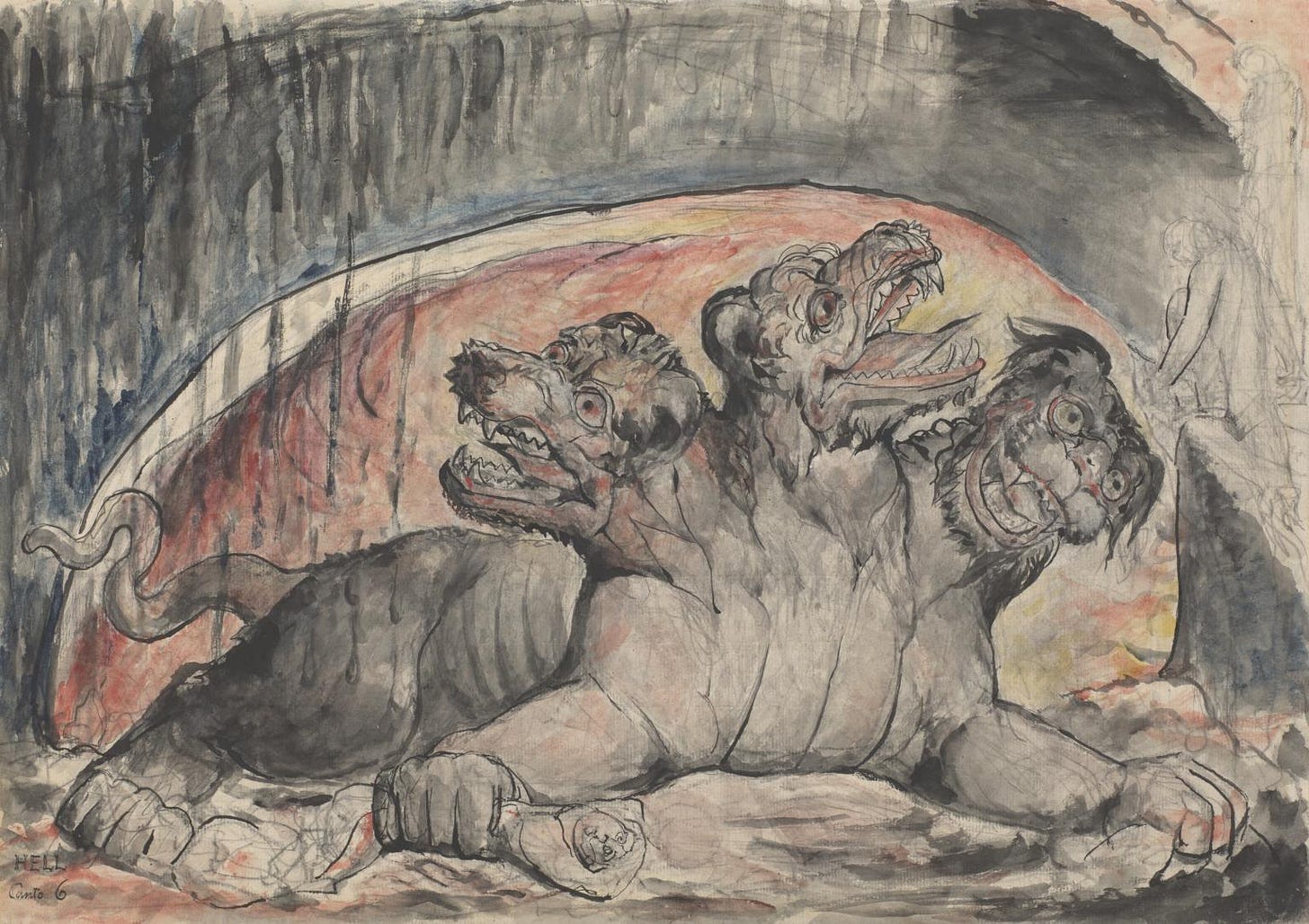Sunday Read: Cerberus and the three heads of AI security – #17
Series: "Mythology": How firewalls, encryption and zero-trust strategies form a unified defense
“Mythology” Series:
Format: Each week we present a concise mythological story and draw direct parallels to contemporary AI concepts.
Goal: Highlight how modern technological dilemmas mirror ancient Greek tales, sparking interest about both subjects.
1. Mythological reference
In Greek mythology, Cerberus is the formidable three-headed dog charged with guarding the entrance to the Underworld. Depictions vary, but all portray a vigilant creature whose multiple heads ensure that no soul enters—or leaves—unnoticed. Cerberus symbolizes relentless watchfulness; ancient sources like Hesiod and Virgil describe him as nearly impossible to bypass, a living embodiment of layered defense that even Hercules struggled to overcome.
2. Parallel with AI and lesson from ancient Greek mythology
The three heads of security
Modern AI systems and data-driven applications require robust protection to fend off malicious intrusions. Much like Cerberus’s three heads, multi-layered security weaves together firewalls, encryption, and zero-trust principles:
Firewalls: Act as the first line of defense, akin to one of Cerberus’s heads barking at anything suspicious approaching the perimeter.
Encryption: Conceals data in transit and at rest, much like another head preventing unauthorized tampering or theft.
Zero-trust architecture: Operates under the assumption that no user or service is fully trustworthy, requiring continuous authentication—mirroring Cerberus’s unrelenting vigilance against intruders.
Lesson: unified defenses under one vigilant guard
Ancient Greeks recognized Cerberus as a single, integrated guardian—despite having multiple heads, it served one ultimate function: protecting Hades’s domain. The same logic applies to AI security strategies. In Zero Trust Networks, authors Evan Gilman and Doug Barth argue that “security cannot be an afterthought—it must be woven into every layer of architecture.” Likewise, Bruce Schneier in Secrets and Lies emphasizes that “security is a process, not a product,” suggesting that continuous management and integration of these “heads” is crucial.
By uniting these layers of defense under a comprehensive policy, organizations ensure that if one mechanism falters, others remain on guard. This synergy not only keeps threats at bay but also bolsters the resilience of AI systems in the face of evolving cyber risks.
3. Reflections and questions to consider
Holistic vs. fragmented security
Are all your security measures working together seamlessly, or do they operate in isolated silos?
Balancing usability and strict control
When does zero-trust or multi-factor authentication start hindering user experience? Is there a sweet spot?
Evolving threats
How often are you updating (or “retraining”) your security protocols to adapt to new hacking techniques and exploit vectors?
Cost vs. coverage
Does the investment in multi-layered security outweigh potential losses from a breach—or is it too reactive?
4. References
Hesiod and Virgil (Classical references describing Cerberus’s role as guardian of the Underworld)
Adrienne Mayor, Gods and Robots: Myths, Machines, and Ancient Dreams of Technology
(Draws parallels between mythic guardians and automated systems or AI defenses)Evan Gilman and Doug Barth, Zero Trust Networks
(Argues that security is a critical element of network architecture at every level)Bruce Schneier, Secrets and Lies: Digital Security in a Networked World
(Emphasizes that real security is an ongoing process, rather than a single product or solution)NIST Cybersecurity Framework
(Provides guidelines for identifying, protecting, detecting, responding to, and recovering from cyber threats)Zero trust architecture (and multi-factor authentication resources)
(Foundational principles for robust, layered security models)





